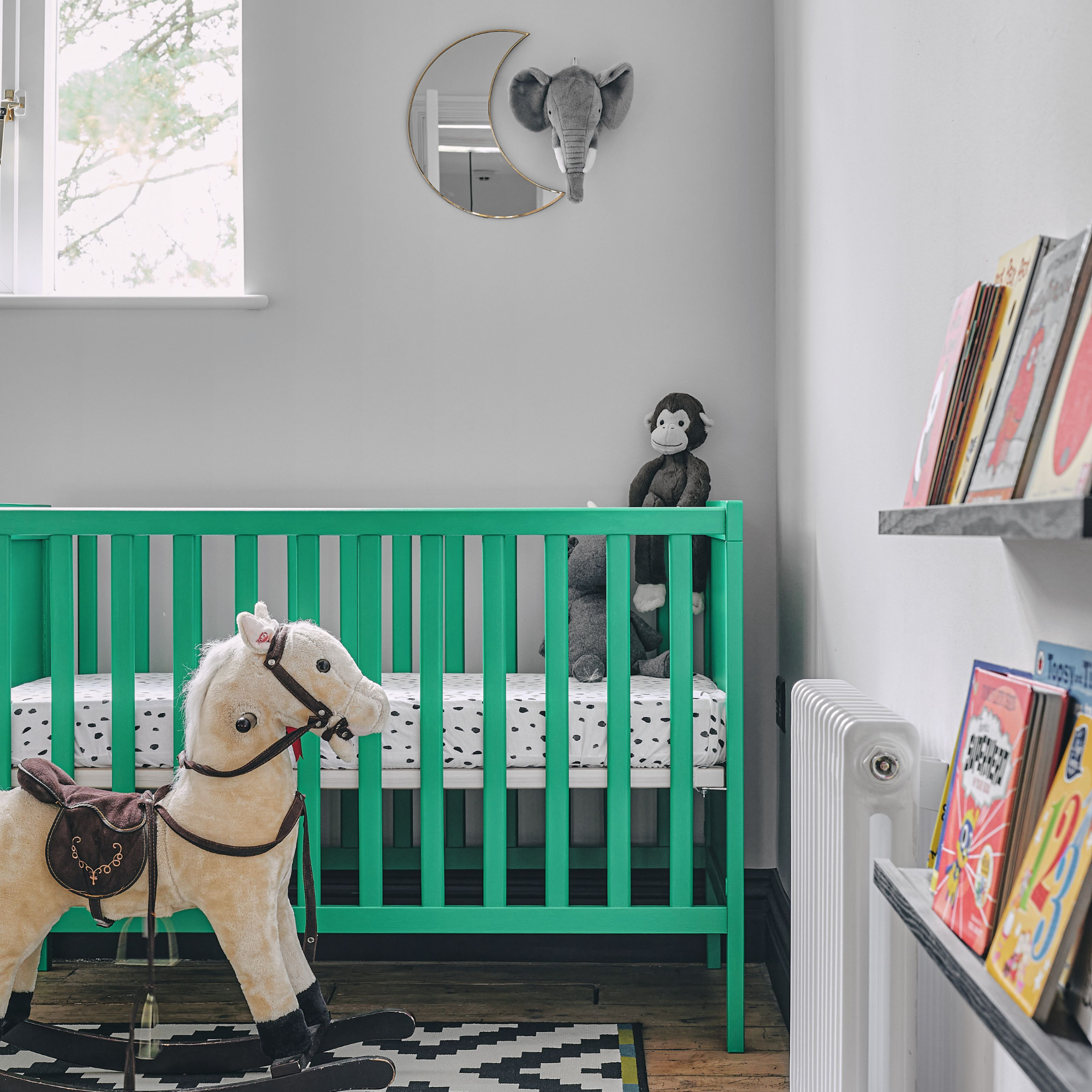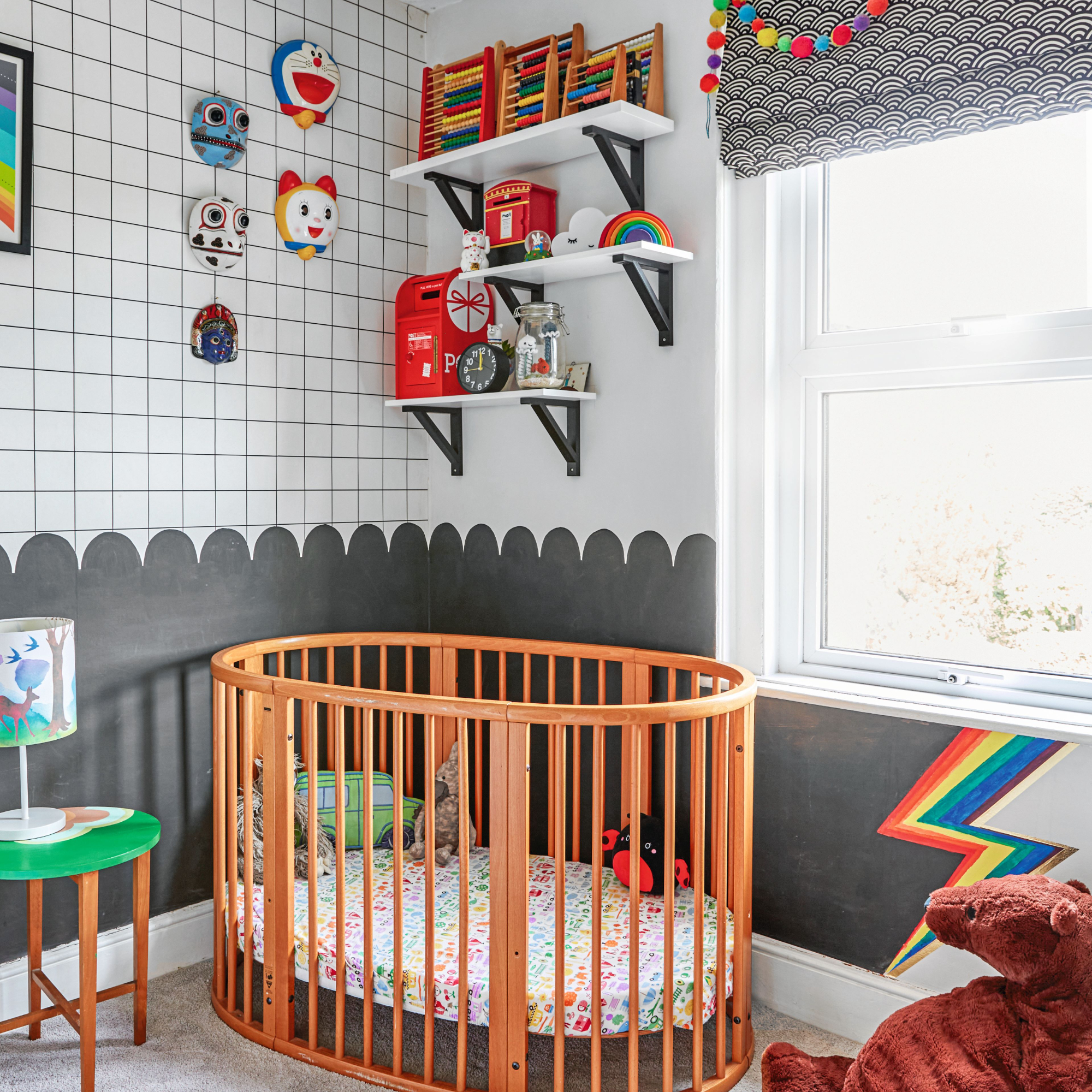How to declutter toys – 7 tips professional organisers swear by to curb the chaos and manage the mess
The best way to organise kids toys and *actually* keep it that way


Toys are one of the many things in life that just keep on giving, even when we really wish they wouldn't. As such, trying to keep on top of decluttering toys can often feel like an uphill battle we're constantly losing. However, with a little intention and drive, finding the best way to declutter kids toys is not as far a feat as you may think.
In an ideal world, our many carefully thought out toy storage ideas would actually stay tidy. But, the reality is that not even a day later, chaos will have already overrun your children's playroom or living room.
Therefore, to decrease the possibility of toys taking over, downsizing the number of toys available to them is one of the most effective and often underrated courses of action to take to prevent playroom storage solutions bursting at the seams once again.

'Children have far too many toys these days and research claims they only play with about 12, so why are are we all guilty of buying them more?' begins Marie Bateson, APDO's volunteers director and founder of Cut The Clutter.
'When they have too much choice or no organisation, there are lots of things that never see the light of day but clutter up our homes and make them look untidy.'
So, to help you effectively declutter kids toys, we've asked professional organisers and decluttering experts to share their top tips to get started on the mammoth task.
1. Choose your moment

Although there's never a 'perfect' moment to get started with trialling a decluttering method (as you'll never begin at that rate), there are definitely smart times to consider getting stuck in – especially with children's toys and belongings.
Sign up to our newsletter for style inspiration, real homes, project and garden advice and shopping know-how
'The end of the summer holidays, the beginning of December, or a few weeks before a birthday can be great moments to declutter the toys in your home,' says Suz Sawtell, APDO member and founder of Declutter and Breathe.
2. Go for the easy wins

Naturally, decluttering can feel like an overwhelming task if you're thinking about the sheer number of toys you've got to sift through. Therefore, to curb this looming feeling and build momentum from the get go, set a timer for a 10-minute declutter to get the ball rolling.
'Start by decluttering toys that are broken, have been outgrown, or that you've not seen your child play with for a while,' advises Suz. 'These are all categories that may require less thought before letting them go.'
As we know from some of the most common decluttering mistakes, trying to start with sentimental items is a no-go, so this is definitely a key thing to keep in mind.
3. Consider what your kids really need

'Kids need less toys than you think to fuel their imaginations,' says Heather Tingle, APDO member and founder of Untangled by Tingle. 'Declutter by supporting your child to decide what stays and what goes.'
While it's easy to believe you know what's best for your child (and 9 times out 10, you probably do), you should take note of the toys they actually gravitate towards on a day-to-day basis and declutter accordingly.
'Give your child the autonomy to make their own decisions, which will become a life long skill – even if it means ditching the 'worthy' toys and keeping the plastic tat,' adds Heather.
4. Make it easy to put away

One of the easiest ways to keep kids toys organised is to have help from your children to keep things in order – and the most reliable way to consistently enlist their help is to make it simple to follow. This goes for both hidden toy storage ideas as well as toy storage for small living rooms (and beyond).
'Use visual labels so children don't have to remember where things go. Open baskets or boxes work really well, as well as the obvious KALLAX units from IKEA,' notes Heather. While you're here, it's also important not to overcomplicate and over categorise. 'Use broad categories to keep similar items together, but don't be overly restrictive over how they're stored,'
Similar to the last point of allowing your kids autonomy, giving them the means to easily participate in tidying up will also build good habits. To start building up this routine, consider the below storage buys to get them started.
5. Implement a toy rotation

To keep things fresh, it could also be worth rotating toys to consistently capture your kids' attention (as well as be an excuse to keep the majority of other toys stored away for the meantime).
'Reducing the number of toys your children has ready access to can help them to focus in their playing and fully explore a toy,' says Suz.
'The benefits include increased engagement, enhanced creativity and imagination, reduced overwhelm, improved focus and attention – and it makes clearing up quicker,' explains Nicola Fraser, APDO member and founder of Organised Living with Nicola.
6. Create an exit strategy

Now you've sifted through and decided on the toys you want to keep, ensuring you've got a proper exit strategy in plan is just as crucial to keep the clutter truly at bay. Failing to do this will just mean you've moved your clutter from boxes in a small playroom to boxes that will sit in your hallway for weeks on end (and eventually make their way back to your little ones' grasp).
'Items that are broken and need to go in the kerbside bin can be placed there with ease. However, if booking a trip to the recycling centre, to do a charity shop drop or to donate to a local toy drive is required, book a date in to your diary at your earliest opportunity,' advises Suz.
7. Learn to say 'no'

If you've made it this far, then you've already completed the hardest part of decluttering toys. However, as we're well aware, this isn't a one and done thing but rather a lifestyle that needs to continually be upheld. As such, you've got to be strong willed enough to be intentional about what enters your home going forward and learning how to say no.
'We all have well meaning friends and relatives who, very kindly, will pass on toys that their children have outgrown or no longer play with. You don't need to accept them if you don't want them or have space for them,' reminds Nicola.
There's no use favouring being 'polite' if you know it'll just create chaos in your home and leave you feeling too overwhelmed to declutter. Granted, it's easier than done, but it's a good habit to incorporate into your life even aside from kids toys to prevent you from hoarding and collecting too much than you realistically need.
Staying on top of keeping less toys will never be a straight forward journey, but hopefully following these tips will help you get one step closer to discovering the best way to declutter kids toys – and keep it that way.

Jullia was Ideal Home’s Junior Writer from 2022-2024 and the Ideal Home Certified Expert in Training on Vacuums having spent over 60 hours testing different models. She’s always loved all things homes and interiors, graduating with a bachelor’s degree in Architectural Studies from the University of Nottingham where her love for writing blossomed following her internship at ArchDaily. Now focused on home tech and cleaning, Jullia works on writing features and explainers to help people make the most of their home appliance investments, putting the newest launches through their paces. When she isn’t writing, she loves exploring the city, coffee shop hopping, and losing hours to a cosy game or book.


